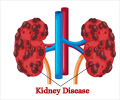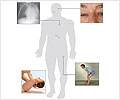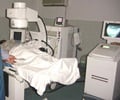NHGRI has developed a strategy that will be tested as the first treatment for people with hereditary inclusion body myopathy (HIBM), a rare, degenerative muscle diseas
National Human Genome Research Institute (NHGRI), part of the National Institutes of Health (NIH), has developed a strategy that will be tested as the first treatment for people with hereditary inclusion body myopathy (HIBM), a rare, degenerative muscle disease. In an unexpected finding, the research indicates that the approach also might benefit patients with certain kidney disorders.
The scientists, led by Marjan Huizing, Ph.D., an associate investigator in NHGRI’s Medical Genetics Branch, report their findings in the June issue of the Journal of Clinical Investigation. The study was supported by the NHGRI Division of Intramural Research and was conducted in collaboration with researchers supported by the Howard Hughes Medical Institute (HHMI), Bethesda, Md., and the HIBM Research Group, Encino, Calif.“It is gratifying to see how the tools and technologies generated by the sequencing of the human genome are being used to uncover new strategies for treating genetic human disease,” said NHGRI Director Francis S. Collins, M.D., Ph.D. “This work also underscores the value of animal models in learning more about the pathways involved in human disease and how to target therapies that affect those pathways.”
NHGRI Scientific Director Eric D. Green, M.D., Ph.D. said, “We are excited by the possibility that this study may lead to new treatments for those who suffer from either HIBM or kidney dysfunction. This work is a solid example of translational research, where discoveries in the laboratory provide a way forward to aid patients dealing with a frustrating and debilitating inherited disorder.”
HIBM is a genetic disease with non life-threatening symptoms that emerge in adulthood and lead to slowly progressive muscle weakness. Most patients develop symptoms while in their early 20s and become wheelchair-bound by the time they reach 40, as their arm, hand, leg and core muscles progressively weaken. It is caused by a mutation in the GNE gene, which codes for two enzymes that produce sialic acid, a sugar important to muscle development and kidney function.
The new research focused on a form of HIBM in Iranian-Jewish families, which is caused by a specific mutation in the GNE gene known as M712T. Numerous other GNE mutations can cause HIBM and occur in populations worldwide. At this time, there is no treatment available for any type of HIBM.
In their search for potential HIBM treatments, the researchers drew upon previous evidence that impairment of the enzymes that promote sialic acid production causes low sialic acid levels in muscle proteins. They hypothesized that a compound called N-acetylmannosamine, or ManNAc, a sugar that is naturally converted to sialic acid, might have an impact on the muscle weakness caused by HIBM.
Advertisement
“We were surprised that the HIBM mutation had such a detrimental impact on kidney function in the transgenic mice,” said Dr. Huizing. “Structural elements in the kidney that are important for filtering waste from the blood in these animals were severely impaired and we linked this to sialic acid deficiency. This outcome demonstrates the significance of the ability of the body to synthesize sialic acid for kidney development and function.”
Advertisement
To date, none of the offspring born to transgenic mice who received ManNAc supplementation have gone on to develop muscle weakness, but the mutant mice remain smaller than their unaffected siblings. Studies are currently ongoing in Dr. Huizing’s laboratory to study the mutant mice until they reach an older age when researchers can assess any onset of muscle weakness. In addition, NHGRI clinical researchers recently observed a temporary, but significant, improvement in muscle strength among HIBM patients who received intravenous immune globulin G – an effect that researchers suspect was mediated through the provision of sialic acid present in the immune globulin.
NHGRI researchers expect the clinical trial of ManNAc for HIBM to begin in late summer or early fall. Based on their findings, the group is also exploring the possibility that ManNAc may benefit people suffering from diseases that involve damage to the cell layers of the kidney that are required for filtering the blood.
Source-Eurekalert
MED/B











